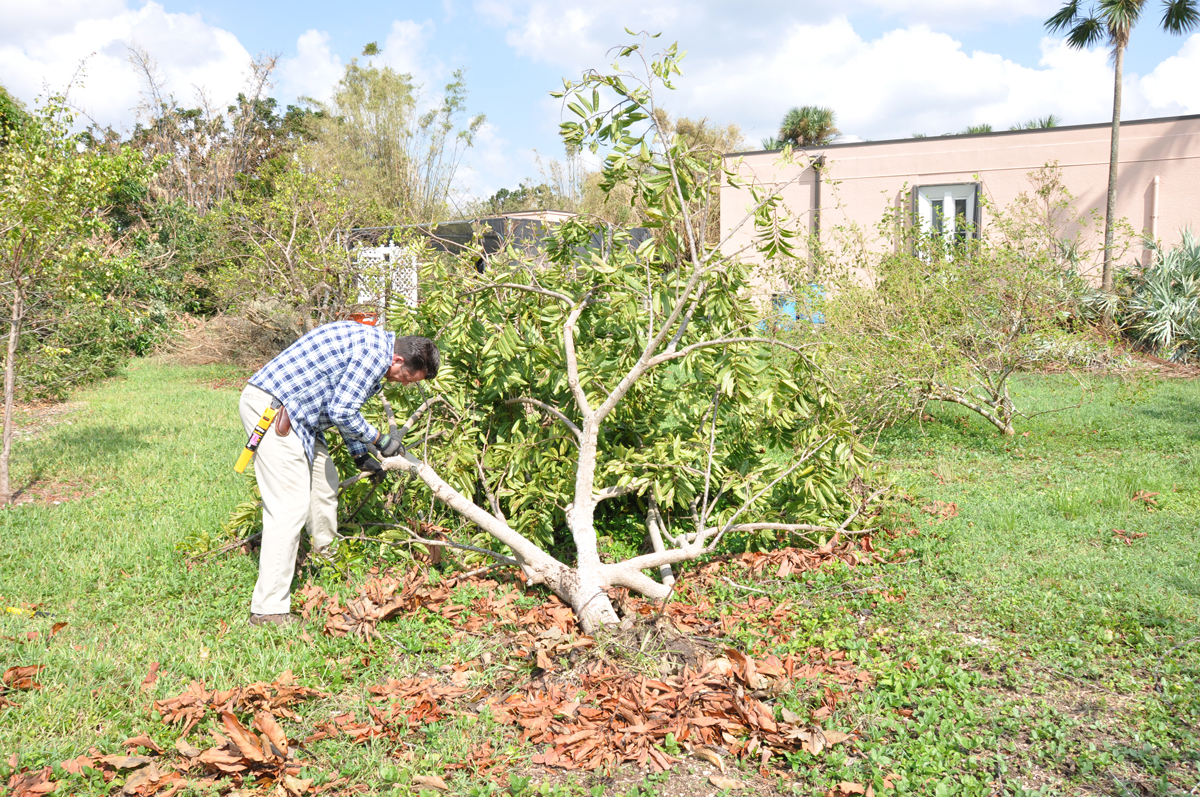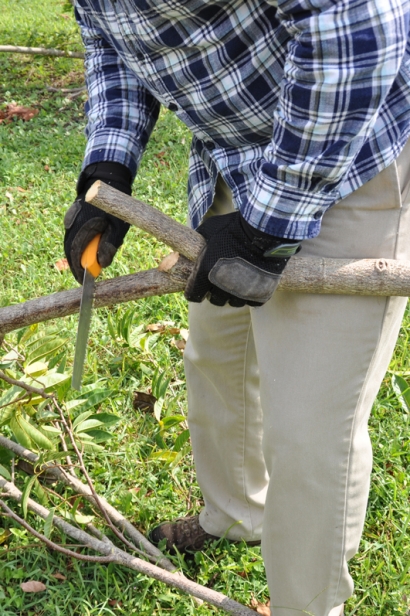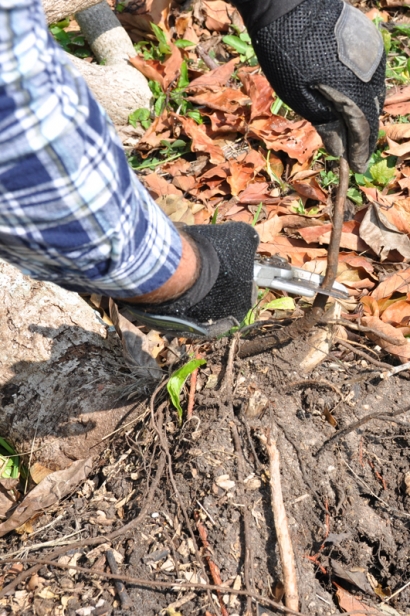What to Do with Your Fruit Trees after a Storm
Hurricane Irma walloped South Florida with powerful and damaging winds for more than 10 hours. Because of sustained high winds, trees suffered immensely. Structural damage to most homes and business was minimal; tree damage was not.
How long a toppled tree can sit depends on how far it fell over and, most importantly, what species it is. You can get a good sense of whether the tree can be saved by looking at the remaining leaves on the tree. If they’re still green and look relatively normal, there’s still a good chance you can save the tree. I tend to lean towards replanting unless the tree has sentimental value or can be reset fairly easily.
Repair
First, assess damage by deciding what can be saved and what should be left to the chippers. Broken branches should be removed from the canopy. If your tree has severely torn limbs, make a clean cut below the tear. If a large fruit tree has fallen, it may be best to remove the tree entirely because the cost to properly and safely reset the tree will be high. Fallen trees can take years to fruit again and may always be weak. Smaller trees can be stood up again following the steps on the right. Treat trees that have been reset like new plantings as they may have lost a significant portion of their canopy and roots. You can lightly fertilize reset trees once they show one to two new flushes of new growth.
Rethink
Once damaged trees have been repaired or removed, think about what went wrong. We need look no further than the last issue of this magazine to find tropical fruit expert Richard Campbell’s timely plea to prune your trees to make them less prone to hurricane damage. Trees kept at a manageable size through selective pruning are far less likely to blow down in a storm, and their fruits will be easier to harvest. Large, unpruned trees went down at a much higher rate than trees that were maintained at 15 feet or less. A commercial sapodilla grower who visited me in my office this morning said it best: “I learned a lesson. I need to prune my trees. A third of my grove was not pruned and that same part of my grove is now gone.”
Replant
If you lost large fruit trees, now is your chance to change the species or cultivar of what you are growing. Hit the reset button and start again. Some fruit trees fared better than others in the storm. Sapodillas tended to stay in the ground while large mangos and avocados had a hard time staying up. Papayas and bananas were trashed by the storm, but they can both be replanted and back in production fairly quickly. Guavas and carambolas lost their crops, but for the most part did not tip over. Whatever you decide to plant, start with a small, healthy, fruit tree. Trees in 1- or 3-gallon containers will be easier to transport and plant. Smaller trees are also cheaper and, most importantly, they have the best chance of having a healthy root system. Trees in larger pots are older and have a greater chance of being rootbound.
Hurricanes have always been a part of life in South Florida. But we know that the fruit grower is not a quitter. You will not give up. You will repair. You will rethink. You will replant.
Questions about your tropical fruit trees? Call a UF/IFAS extension agent at 305-248-3311. Homeowners: Adrian Hunsberger (ext. 236); commercial tropical fruit growers: Jeff Wasielewski (ext. 227); commercial vegetable growers: Qingren Wang (ext. 234).








